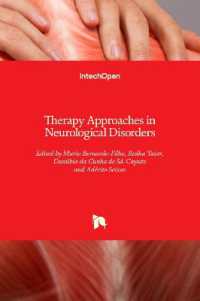- ホーム
- > 洋書
- > 英文書
- > Literary Criticism
Full Description
An exciting topological foray into Romantic textuality, Fantastic Shapes shows how poetic form participates in a broader reimagining of space and spatial relations at the turn of the nineteenth century. It reveals how the textual surface, far from being a passive carrier wave of content, emerges as an active, shaping force: a dynamic, self-reflexive site of meaning-making. Focusing on four poets - John Keats, Charlotte Smith, Percy Shelley and Felicia Hemans - the book engages with developments in non-Euclidean geometry to argue that far-reaching reconceptualizations of space not only form the backdrop to Romanticism's challenge to classical order, but come to constitute that very challenge. This book's wider aim is to offer fresh perspectives on key Romantic signatures: irony, fragmentation, non-orientability, recursion, and spatial paradox. These formal tendencies, Richard Marggraf-Turley argues, are not merely aesthetic or rhetorical effects but expressions of a deeper epistemic rupture - one that unfolds against a mathematical revolution that was testing, and ultimately disrupting, the constraints of Euclidean spatial logic.
Contents
Introductory
i. Hyperbolic
ii. Let X(anadu) be a space
iii. At the top|ology
iv. In sum
Local Behaviours
i. Strips and bottles
ii. Zones and chequerwork
iii. Boke, ditty, sang
iv. The same but different
v. That kind of textuality
vi. Topology and topography
vii. Concluding
viii. Coda: Cylindrical
Limit Points
i. Categories of space
ii. Here and there
iii. Transhorizonal
iv. Endnotes
v. These mournful lines
Lava Urns and Connected Sums
i. Textual
ii. Curvature, excess
iii. Lava urns, connected sums
iv. Impress'd
Speech Marks
i. Shelley space
ii. Metasources
iii. To whom thou say'st
Coda: Vanishing Points
i. Refractions
ii. Projections
iii. Reflections
iv. Impressions
v. Horizons








